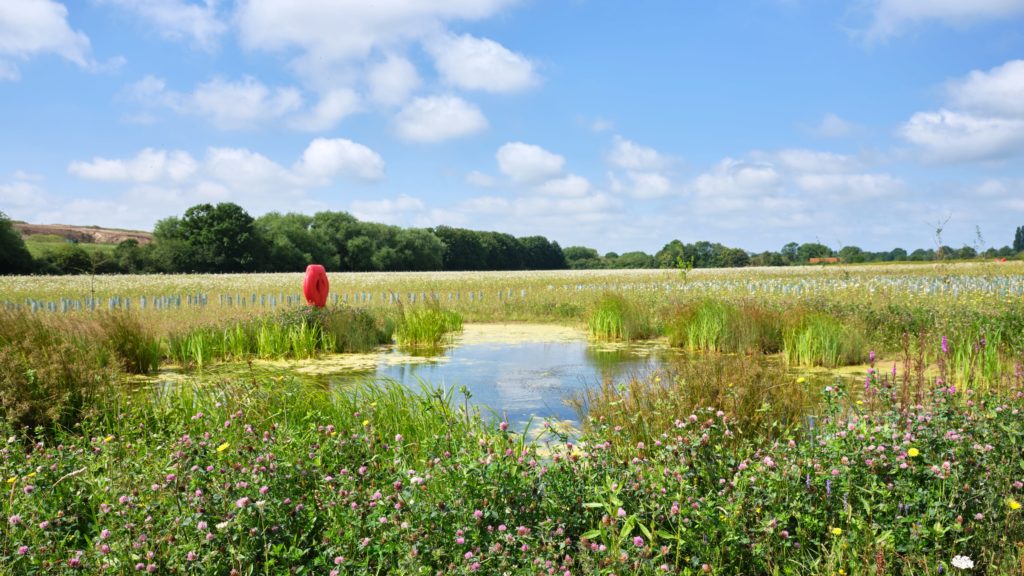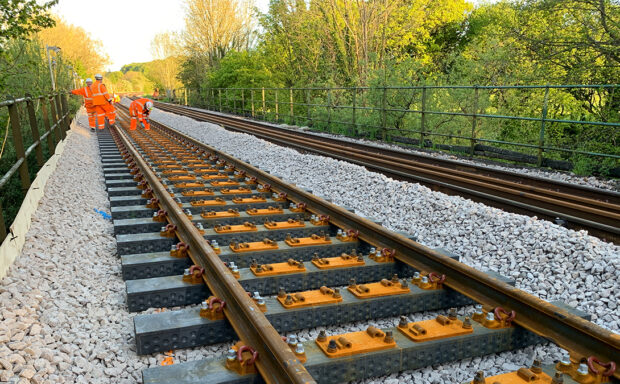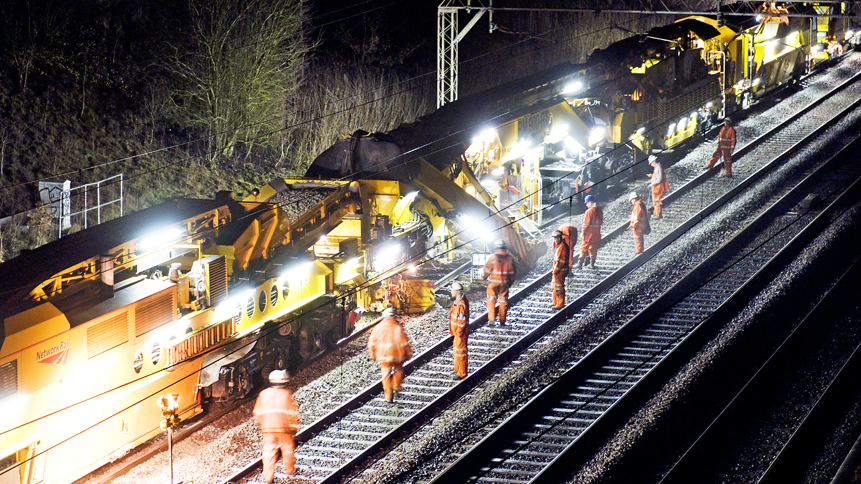We and other organisations in the rail industry have been busy promoting the green benefits of rail at the 26th UN Climate Change Conference of the Parties (COP26) in Glasgow.
Here are nine highlights from the past couple of weeks …
1 – Ground-breaking green trains
Glasgow Central station hosted the green trains of the future. The Porterbrook HydroFLEX is a hydrogen-ready hybrid capable of being powered by hydrogen, battery or the overhead electric wires.
We also showcased Vivarail’s battery-powered train to demonstrate the rail industry’s commitment to further decarbonising Britain’s railway. Together, we’re also supporting the UK and Scottish Governments’ net zero targets.
His Royal Highness The Prince of Wales and Prime Minister Boris Johnson were among those to get tours.

2 – Best-selling children’s authors got on board

M.G. Leonard and Sam Sedgman, authors of the award-winning Adventures on Trains series, led an event on board Porterbrook’s HydroFLEX train with a group of schoolchildren who took part in a recent competition organised by Scotland’s Railway.
The competition asked children from primary schools in Scotland to find creative ways to encourage people to live a bit greener and travel by train.
Maya and Sam’s fifth book, titled Sabotage on the Solar Express, will be released in February next year. It features a train of the future powered by solar panels and hydrogen fuel cells.
Just like the train in the next book, the Porterbrook HydroFLEX is a hybrid train – that can be powered by hydrogen fuel cells and the overhead electric wires.
3 – Greta travelled by train!
Environmental activist Greta Thunberg stayed true to her commitment to use green forms of travel and took the train to the conference.
We spotted Greta arriving at Glasgow Central for the beginning of the event, along with many passengers who opted to use the more environmentally-friendly railway.
- A single train removes up to 500 cars off our roads
- Every freight train removes on average 76 lorries from our roads
- Leaving your car at home and taking the train cuts carbon emissions by two thirds.

4 – Thousands of tonnes of essentials transported by rail to Scotland daily

If you saw COP26 delegates munching a snack while strolling the streets of Glasgow, there was a fair chance those tasty bites arrived in Scotland by rail.
Every 24 hours, more than 8,000 tonnes of food, products and other essentials pass over the England-Scotland border at Gretna in freight trains – the greenest way of transporting food, drink and other essentials in bulk.
Scotland doesn’t have any deep-sea container ports so it relies on the West Coast Main Line from London Euston to keep supplies moving north.
Next day, those goods can be found on sale in supermarkets, high street shops and hospitality venues like Glasgow’s huge COP26 conference complex on the banks of the river Clyde.
5 – Public saw rail as green – but many still used cars
A survey found two-thirds of the British public recognised the railway as a greener mode of transport. But 73% of this group said they still mainly used cars to get around.
It revealed people needed further convincing to travel on trains rather than cars despite volatile motor fuel prices and rail’s significantly lower carbon emissions.
But leisure travel by train is on the rise. Of the 2,000 people surveyed, 67% said they would consider using the train instead of a car for a day out with friends or family. More than half said they would also consider using the train for travel to a big music or sports event.

6 – Green train went Forth

We and Vivarail released stunning aerial shots of the first emission-free fully-electric train to cross the iconic Forth Bridge.
We’ve identified this tech as an important element of plans to make rail even greener. You can read more about this in our interim Traction Decarbonisation Network Strategy.
Vivarail has designed and manufactured pure battery and battery hybrid trains, as well as innovative charging technology. Its next generation train can achieve a range of up to 100km and recharges in just 10 minutes.
The flexibility of batteries mean this package can be used to repurpose good quality diesel units or added to other types of electric train so that they’re capable of travelling on parts of the network not yet electrified.
7 – East West Rail Alliance put the environment first
We shared how more than 150,000 trees had been planted so far in a pledge to restore habitats and help tackle climate change during the building of new railway line between Oxford and Cambridge.
We’re working with the East West Rail Alliance to build East West Rail Connection Stage One is currently being built between Oxford, Bletchley and Milton Keynes in Buckinghamshire.
The first phase of the project between Oxford and Bicester was completed in 2015 and construction is currently underway to build the second phase between Bicester, Bletchley and Milton Keynes.
The plans for the construction between Bicester, Bletchley and Milton Keynes committed to restoring any habitats disrupted during construction and creating 10% more, so that wildlife, trees and plants can thrive in future. It’s a first for a major rail infrastructure project in Britain.

8 – You drove a train!

Trade body Rail Delivery Group set up a very popular stand at Glasgow Central so you could give its green train simulator a go.
You could go inside the moss-covered carriage and get in the driving seat of an electric Class 314 train.
The simulated train journey between Pollockshields East and Glasgow Central station gave you the chance to see what it was like to drive an electric train.
You could also pit yourself against other people on the interactive experience, with points calculated via the stopping accuracy and time taken for each competitor to safely complete the virtual journey.
9 – Green milestone reached
Our Commercial and Procurement team reached an important milestone in partnering with suppliers to tackle climate change.
It secured commitments from half of suppliers to join the Science Based Targets initiative to reduce their carbon footprint.
Science Based Targets are part of our Environmental Sustainability Strategy to deliver a cleaner, greener railway.
These are independently verified plans to reduce carbon emissions to limit global warming to 1.5 degrees Celsius to mitigate the worst effects of climate change.

Read more:
Summer by rail – boosting economy and environment
Sustainable development at Network Rail
Network Rail sets world-first targets to combat global warming




